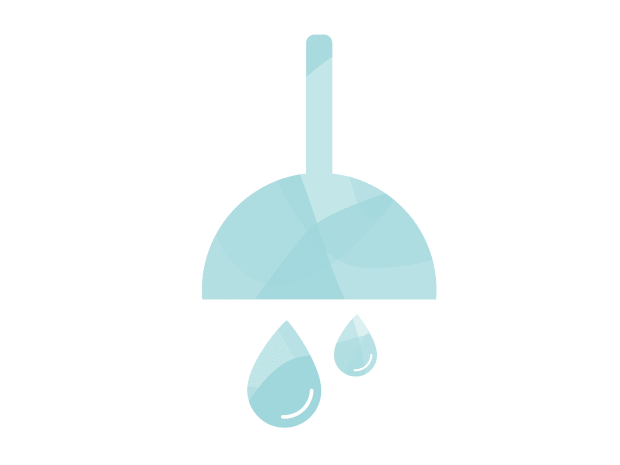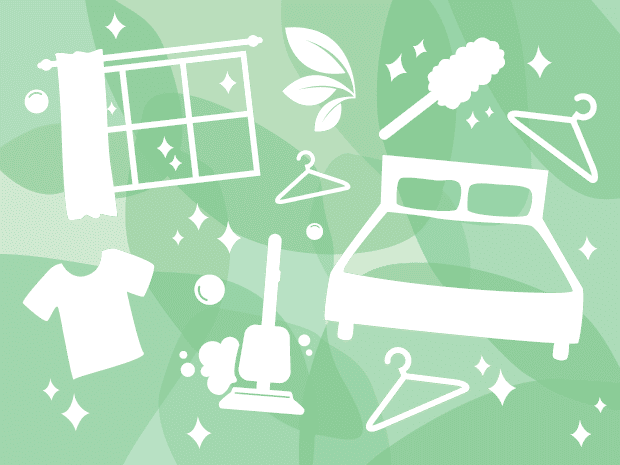
COVID-19 cleaning checklist: The germiest items most people forget.
The most overlooked things in your home you should be cleaning right now.
Read More


Last Updated: May 19, 2022
Does your couch need a deep clean or just a little TLC? We're here to help! Read on for simple steps on how to clean a fabric couch with natural cleaners.
Home is where the heart is, but really, that favorite spot on the couch is actually the keeper of your heart. The one where the cushion is a bit worn out and your pet’s hair is probably everywhere. You know the one.
Everyone loves a good, relaxing lounge on the couch. Whether that’s movie night with the kids, snuggle time with the pet, or a well-deserved nap after a long day, a good couch supports you through thick and thin.
But as a constant standby and supporter, couches inevitably get dirty and worn down. From food crumbs to sweat to pet hair to wine stains — the couch takes more of a beating than most furniture. Because of this, your sofa may become a hotbed for bacteria and viruses. So, how do you actually clean a couch? With proper natural cleaners, a few cleaning tips, and a bit of patience, you can get your fabric couch looking brand new again.
Before we get into how to clean your couch and couch cushions, check out our list below of what natural cleaners and tools you should gather first. There are a handful of great cleaners to use on your couch—just make sure they are made with natural ingredients and not harsh chemicals or bleaches that can damage your couch fabric. And, like most cleaning jobs, the right cleaning product all depends on the type of textile you’re working on.
The following tools and materials generally work great on a fabric couch — but not on a synthetic, wool, or leather couch.
The first and most important step in cleaning your couch is finding its care tag. These are usually underneath the cushions or on the underside of the couch itself.
The care tag will tell you more about what your couch is made of and how best to care for it.
You’ll also find a few different codes or symbols:
“W” means that you can safely use water and a water-based cleaner to clean your couch.
“S/W” means you can use solvents and water-based cleaners to clean your couch. Solvents include products like any of the best natural laundry detergents.
“S” means you can safely use solvents, and only solvents, to clean your couch. This includes dry solvent cleaners that do not use water.
“X” means you cannot use a traditional couch cleaner of any kind — stick to using a vacuum cleaner or calling the professionals.
Whether it's an old hand-me-down or a newly broken-in piece, deep cleaning your couch is crucial to keeping it clean, comfy, and beautiful. First, try this all-natural deep-cleaning process, and if your couch needs more help, move on to our quick tips for stain-removal in the following section.
Before you start vacumming, try a lint brush on your couch to loosen debris. Then, using an upholstery or soft brush attachment, vacuum the entire couch. Remove the cushions, if you can, and get into the crevices where crumbs and hair tend to hide.
Use a slightly damp Microfiber cloth to wipe down the non fabric-upholstered sections of the couch — like the legs, the supports, and the couch itself, if it’s the right material — to remove dust and reduce germs.
When it comes to odors, baking soda is your best friend. Sprinkle it over the entirety of your fabric-upholstered couch, let it sit for a half hour, and vacuum it thoroughly. The odors will disappear along with the baking soda!
GROVE QUICK TIP
You can deodorize with Step 1 above to save time, especially if your couch doesn’t have too much debris to clean up.
Or, save time, by leveling up your deodorizing with a fabric and room spray like Caldrea's linen and room spray for an all-over odor remover for the entire room.

The most important part of keeping your couch beautiful and comfy is treating stubborn stains as soon as they occur, if possible, and using the right tools and treatments.
As bad as couch stains are, improperly cleaning them may lead to damage that’ll look much worse. Check your couch’s cleaning code and care instructions before using any type of cleaner.
Vacuum thoroughly with an upholstery brush to remove dust, dirt, hair, and other debris.
GROVE CLEANING TIP
Like most cleaning conundrums, this has to do with how often you (or other people/pets) are using your couch.
You can probably get away with cleaning your entire couch through vacuuming and deodorizing once a month.
If you have shedding pets, once a week is better.
When it comes to deep-cleaning and dry-cleaning, once or twice a year is more reasonable.
When all is said and done, if your entire couch requires extra special care — or if it's just really, really dirty — professional couch cleaning is a good option to consider.
Professional couch cleaning or upholstery cleaning, while pricey compared to baking soda or other store-bought cleaners, has a lot to offer.
For one, the professionals have all the right tools and cleaners for every type of couch, ensuring a deep clean that’ll remove all dust, dirt, oils, bacteria, and stubborn stains without the worry of potentially damaging mishaps.
Professional couch cleaning or upholstery cleaning can cost anywhere from $100–$300, depending on your location, the company, the service, and the type of couch needing cleaning.
No matter which method you choose, rest assured that after you show your couch some love, it’s going to love you right back for years to come.

The most overlooked things in your home you should be cleaning right now.

Cleaning baseboards may seem like a daunting task but it actually only takes 3 quick steps for a baseboard refresh.

We've rounded up 6 tips to thoroughly clean each and every type of shower head. Take a look!

Memory foam may seem un-cleanable but we've found the cleaning hacks to get your memory foam back into shape.